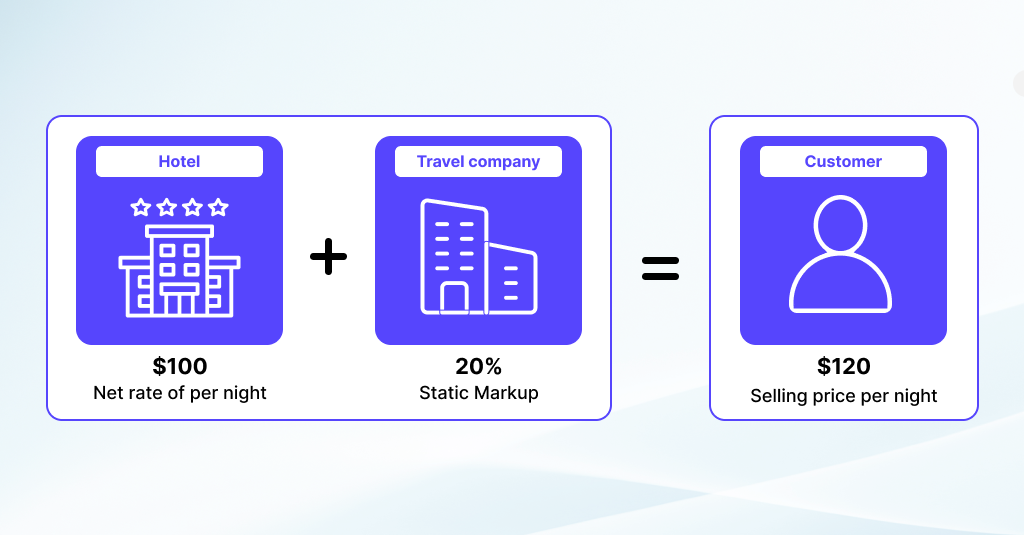What is Static Markup?
Static markup refers to a predetermined percentage added to the net price of hotel inventory. This practice is a fundamental aspect of revenue management in the travel industry, particularly for travel agencies and tour operators.

Understanding Static Markup
Static markup is a fundamental concept in the travel industry, particularly in the realm of hotel pricing strategies. At its core, static markup involves adding a predetermined, fixed percentage to the base cost of hotel rooms, known as the net rate, which is provided by the hotel. For example, if a hotel offers a room at a net rate of $100 per night and the travel company applies a 20% static markup, the final selling price to the customer becomes $120 per night. This straightforward approach allows travel companies to maintain consistent pricing, which can be easily communicated to both customers and partners.
Benefits and Importance in the Travel Industry
Grasping the mechanics of static markup is essential for anyone involved in travel management and pricing strategies, as it forms the foundation of many traditional pricing models in the industry. It’s not just a simple arithmetic exercise but a crucial element in determining profitability, competitiveness, and customer satisfaction. Its predictability makes it particularly attractive to smaller travel agencies and those operating in markets where price fluctuations are minimal, or where the clientele prefers stable pricing over the uncertainty of dynamic models.
Moreover, it plays a pivotal role in revenue forecasting and financial planning. By knowing the exact markup, travel companies can better anticipate revenue streams, manage costs, and ensure that they meet their financial targets. While dynamic pricing and advanced revenue management technologies are gaining traction, offering the ability to respond quickly to market changes and optimize revenue, static markup remains a relevant and often preferred method for many travel companies. This is especially true for those seeking simplicity, ease of management, and the ability to offer predictable pricing, which can be a significant competitive advantage in a crowded and complex market.
Conclusion
In a rapidly evolving industry where new technologies and pricing models are constantly emerging, understanding and effectively utilizing static markup can provide a stable foundation. It allows travel companies to balance innovation with the reliability that comes from a tried-and-true pricing strategy, ensuring they can meet the needs of a diverse range of customers while maintaining healthy profit margins.







